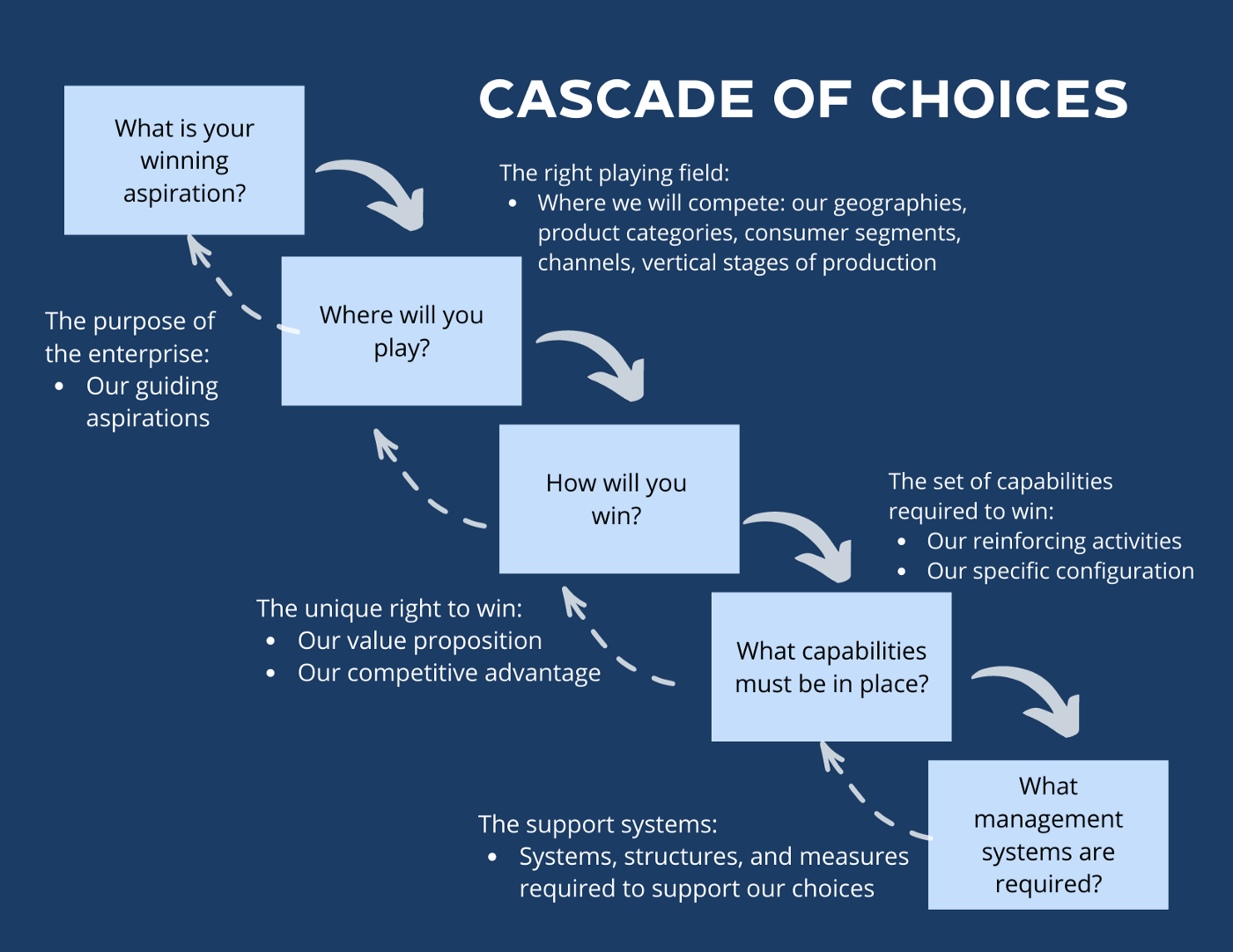A Few Playing to Win Choices Can Make a Big Difference in Start-Up and Small Business Success
In a recent article, Strategy for Start-Ups, my Leading to Win co-author and colleague Roger Martin argues that a little bit of strategy effort can make all the difference in an entrepreneur’s start-up success or failure. It can also make a lot of difference in a small business proprietor’s, nonprofit’s and freelancer’s success or failure.
Why don’t start ups and other small businesses prioritize strategy for their business? Why do so many start-up and small business leaders assume they don’t have the resources, money, people, energy, effort or time for business strategy?
First, they don’t understand that what they are actually doing is de facto their strategy. Every business and every organization has a strategy whether they devote one iota of energy, effort and time to business strategy or not. Strategy is what they do everyday.
Second, they confuse strategy with vision or mission, goals or objectives, plans, or whatever the trending business topic is (example: key performance indicators (KPI’s).
Third, they don’t understand that business strategy is nothing more than a handful of choices. What you, your business and your organization will do, and just as importantly, what you and your organization will not do. Many times the most powerful, enabling and empowering choice I made was to be crystal clear about what was NOT winning, where we would NOT play, how we would NOT win.
Strategy is choice. It’s that simple.
You don’t need an outside consultant or advisor to make good choices about your business, but it may help to have someone who understands the choice-making framework help guide the discussion. Someone to challenge you to make real choices. Someone to ask what would have to be true for one choice to give you a better chance of winning than another.
You don’t need detailed analyses and studies to help you make good choices. You don’t need a large committee or team to think and talk through the choice cascade and choice options. In fact, I have participated in several very productive small-group Playing to Win strategy sessions that have made important choices in as little as 1-2 hours. All you need is a little time and a handful of people who know the business and the players.
Here are a few helpful hints to get started.
The more integrated and coordinated your choices are, the higher your probability of winning. Taken together, the five choices should create or increase competitive advantage, deliver more value to your customer and create more value for your business.
The better what is winning choices have aspirational and measurable goals. Winning aspirations can vary widely. A good starting point for measurable goals for small and start-up businesses would be the drivers of operating value creation, the drivers of revenue, cash flow, profit and margins.
Where to play and how to win choices are very important and must be made together. They should be mutually reinforcing. The most important where to play choice is: Who is my customer?
The purpose of every business is to create customers and serve them better than any competitor can. If you don’t have enough customers, you don’t have enough revenue. You have an unsuccessful business. What is my product or service? What industry, category or segment will I compete in? Do I distribute direct to my customer, or through distribution channels? What geography or market will I serve? What price tiers will I serve? Ultimately, what is my unique, or at least better and preferred customer value proposition?
These are some of the more common where to play choices. The ultimate start-up where to play choice attempts to create a new category, or even an entirely new industry, what has been called a Blue Ocean Strategy by Kim and Malborgne. Another successful start-up strategy seeks to disrupt and significantly transform an existing category or industry. All successful start-up and small business strategies make a different set of choices than existing competitors. Some of the most successful are truly unique.
There are fewer how to win choices.
There is only one lowest price provider of a product or service in any industry or category, market or region. If you intend to sustain the lower-cost structure, then you must have the capabilities and the management systems that support the leanest, most productive, simplest organization and operations. This is not an easy feat.
The vast majority of businesses compete on a differentiation strategy. As with winning aspirations, there is a wide range of differentiation strategies that can sustain competitive advantage and deliver superior customer value and winning company value creation. Highly-focused niche strategies are gaining more and more success across categories and industries by appealing to a very specific, targeted customer with a very unique, high quality product or service experience.
Core capability or competency choices reinforce and support where to play and how to win choices. Even in a big, global Fortune 50 company like P&G, very few must-have capabilities drove most of the company businesses’ advantages:
Deeper understanding of and insights about consumers of our brands and products.
Innovation and technology leadership.
Preferred customer and supplier partnerships.
Significant scale and scope that drove innovation and productivity advantages.
To gain and sustain competitive advantage in these capability areas, we consistently invested more resources, more money and more people in capability acquisition, innovation and continuous improvement than any of our competitors.
Final choice. Enabling management systems.
For start-ups, small companies and nonprofits, these systems can be as simple as weekly meetings where choices and priorities are communicated and reinforced, action plans that clearly spell out who will do what, how and when, and RIDE decision making that clearly calls out who has the D-decision making authority, who may R-recommend action and I-input to the recommendation, and who has the all important E-execution responsibility.
Execution, what a start-up, small company, nonprofit or freelancer actually does, is the only strategy customer or competitor or the marketplace will ever see.
Hope you enjoy Roger’s take on why strategy is worth the effort and time for start-ups.




